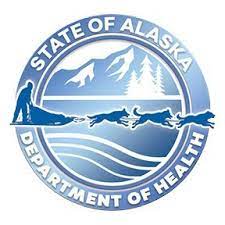For the month of February 2024, Infection Control Today® and ContagionLive® are collaborating on rare infectious diseases for Rare Disease Awareness Month, examining both old and new infectious diseases that health care workers need to know.
The Alaska Section of Epidemiology (SOE) reported the first death from the Alaskapox virus (AKPV) in late January 2024. Since the discovery of AKPV in 2015, there have been 7 reported cases of the infection. The mode of transmission for this case remains uncertain, though it is speculated that scratches from a stray cat could have served as a potential route of infection through fomite transmission.
“This is the first case of severe AKPV infection resulting in hospitalization and death. The patient’s immunocompromised status likely contributed to illness severity,” wrote a SOE representative. “Moreover, being the first case of AKPV identified outside of the Interior region, it indicates that AKPV appears to be more geographically widespread in Alaska’s small mammals than previously known and warrants increased statewide awareness among clinicians.”1
The patient was treated with intravenous tecovirimat, intravenous vaccinia immunoglobulin, and oral brincidofovir, leading to initial improvements such as plaque recession and reduced erythema. Despite these early signs of recovery and intensive medical care, the patient later developed complications including delayed wound healing, malnutrition, acute renal failure, and respiratory failure.
“The patient complained of severe neuropathic-type burning pain,” wrote SOE investigators. “The prior biopsy site in the right axilla was nonhealing and draining copious serous fluid with a surrounding gray coalescent plaque. Computed tomography and magnetic resonance imaging revealed extensive myositis involving his right axilla and shoulder musculature. Four smaller pox-like lesions were also present in diffuse locations across his body.”1
3 Key Takeaways
- The first death from AKPV marks a significant development since the discovery of AKPV in 2015, highlighting the virus's potential severity, especially in immunocompromised individuals.
- The identification of an AKPV case outside of Alaska's Interior region suggests that the virus may be more geographically widespread among small mammals in Alaska than previously understood.
- In response to the first fatality and the broader implications for public health, the SOE, in collaboration with the University of Alaska Museum and the CDC, is expanding testing for AKPV in small mammals across different regions of Alaska.
In mid-September 2023, an elderly man with a history of immunosuppression due to cancer treatment developed a tender red papule in his right axilla. Over 6 weeks, many emergency room visits, and after being prescribed various antibiotics, his condition worsened. He experienced fatigue, increased pain, and loss of motion in his arm, ultimately leading to hospitalization in November 2023. The patient was misdiagnosed with cowpox virus as he experienced severe neuropathic pain, and imaging tests revealed extensive myositis. Further testing by the Alaska State Public Health Laboratory and the Centers for Disease Control and Prevention (CDC) confirmed the presence of AKPV, distinct from previous isolates found in Fairbanks.
In response, the SOE, alongside the University of Alaska Museum and the CDC, is expanding efforts to test small mammals for the infection across regions beyond the Interior, Alaska. These efforts aim to better understand the distribution of the virus and potentially inform strategies to prevent further spread. Alaskans should follow CDC guidelines for staying healthy around wildlife to prevent potential AKPV infections.
According to the CDC, “bites and scratches from wild animals can cause injury and spread germs, even if the wound does not seem deep or serious. Keeping your distance from wild animals is the best way to prevent bites and scratches. Animal bites and scratches can spread germs, even if the wound does not seem deep or serious.”2
The Alaska Division of Public Health suggests talking to a healthcare provider to assess if the symptoms are caused by AKPV.
“People with AKPV have had one or more skin lesions and other symptoms like swollen lymph nodes and joint or muscle pain. Several AKPV patients initially thought they had a spider or insect bite. Nearly all patients had mild illnesses that resolved on their own after a few weeks. There has been one patient with an immunocompromising condition that developed severe disease and died after prolonged illness.”3
All in all, although rare, the potential for severe outcomes in immunocompromised individuals emphasized the importance of ongoing research and surveillance to better understand the risks associated with AKPV.
References
- Fatal Alaskapox Infection in Southcentral Alaska Resident. Alaska Department of Health. Feb 9, 2024. Accessed February 13, 2024. https://epi.alaska.gov/bulletins/docs/b2024_02.pdf?utm_medium=email&utm_source=govdelivery
- CDC. Wildlife, healthy pets, healthy people. Published July 5, 2023. Accessed February 13, 2024. https://www.cdc.gov/healthypets/pets/wildlife.html#tabs-1-3
- Frequently asked questions about Alaskapox virus. Alaska Department of Health. Accessed February 13, 2024. https://health.alaska.gov/dph/Epi/id/SiteAssets/Pages/Alaskapox/Alaskapox-FAQ.pdf

